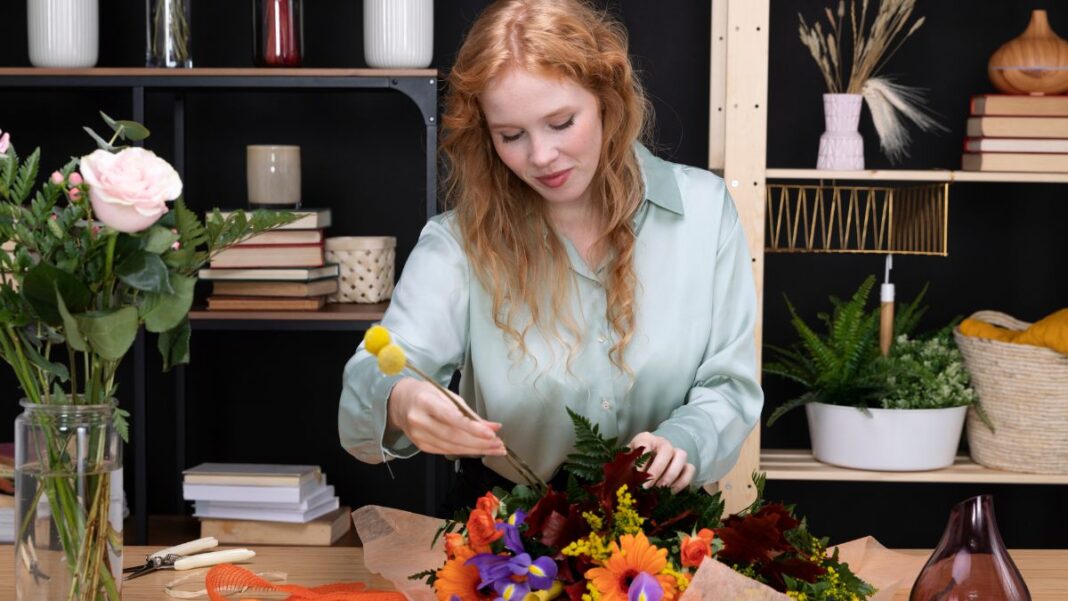In the world of decorative arts, Pyntekvister stands out as a timeless craft that intertwines intricate design with rich cultural heritage. With its delicate, nature-inspired forms—typically modeled after twigs, vines, or organic patterns—Pyntekvister offers both meditative joy and a visually stunning result. Whether you’re a complete novice or a curious creator, learning the art of Pyntekvister opens doors to creativity, mindfulness, and a deep appreciation for the elegance of simplicity.
What Is Pyntekvister?
Pyntekvister, a term derived from Scandinavian roots (roughly translating to “decorative twigs” or “ornamental branches”), is a traditional form of embellishment that focuses on swirling, naturalistic motifs. Often seen in Nordic folk art, it’s used in paper crafts, woodworking, textile embellishment, and even interior decor.
At its core, Pyntekvister is not just about aesthetics—it’s about honoring organic shapes and breathing life into everyday objects. From hand-painted wall borders to laser-cut ornaments and embroidered patterns, this versatile form invites artists to draw inspiration from nature’s grace.
Historical and Cultural Significance
Pyntekvister can be traced back to traditional Scandinavian folk designs, often used to decorate wooden furniture, religious iconography, and festive ornaments. It represents harmony with the natural world—echoing the curves of birch trees, pine branches, and blooming vines.
Historically, artisans would paint Pyntekvister patterns on farm tools, wooden walls, and chests during festivals or celebrations, especially Christmas and midsummer. The swirls symbolized renewal, prosperity, and spiritual continuity.
Today, the art form has been revived and reimagined in various creative formats, maintaining its charm while adapting to modern aesthetics.
Core Techniques of Pyntekvister
While Pyntekvister is expressive and free-flowing, mastering its basic structure helps elevate your creations. Here are some key techniques to know:
1. Swirling Motifs
The cornerstone of Pyntekvister is the elegant swirl. These motifs resemble spiraling vines or tendrils and form the backbone of any design. Beginners should start by practicing fluid “S” and “C” shapes to understand the rhythm of curvature.
2. Symmetry and Balance
Though the style may appear freeform, there’s often a hidden symmetry. Artists mirror elements or anchor their designs with a central spine. Understanding spatial balance helps prevent clutter and makes compositions more pleasing.
3. Floral and Leaf Embellishments
Once swirls are mastered, add buds, berries, or leaves at intersections or tips. These features offer visual breaks and enhance the natural flow.
4. Layering Techniques
In painting or digital design, layering strokes of different opacity or thickness can create depth. In embroidery or carving, overlapping textures add richness.
Essential Tools and Materials
Depending on the medium you choose for your Pyntekvister expression—drawing, painting, embroidery, carving, etc.—your toolkit will vary. Here’s a general guide for beginners:
For Paper or Canvas Art:
-
Smooth drawing paper or watercolor paper
-
Pencils for sketching outlines
-
Fine-tip pens or brushes
-
Watercolors or acrylics (optional for color work)
-
Erasers and rulers
For Embroidery:
-
Embroidery hoops
-
Fabric (linen or cotton works well)
-
Embroidery floss (greens, browns, and natural hues)
-
Needles (assorted sizes)
-
Transfer paper or soluble pens for designs
For Digital Artists:
-
Drawing tablet or iPad
-
Stylus pen
-
Digital illustration software (like Procreate or Adobe Fresco)
-
Pyntekvister brush packs (many free packs mimic folk-style strokes)
For Woodworking or Carving:
-
Sanded wood pieces
-
Carving tools or pyrography pens
-
Wood stain or paint
-
Sealant for preservation
Tips for Beginners
Starting a new art form can be intimidating, but Pyntekvister is all about patience and personal expression. Here are some tips to help you ease into the craft:
1. Start Small
Don’t aim for a large wall mural or a complex wooden carving right away. Start with bookmarks, greeting cards, small embroidery hoops, or corner patterns in your sketchbook.
2. Practice Flow Lines
Before detailing your design, draw flow lines that guide the direction of your vines and swirls. This skeletal structure helps in planning symmetry and spacing.
3. Use Nature as a Reference
Observe twigs, ferns, and climbing vines in your garden or park. The real world provides endless inspiration for patterns and motifs.
4. Limit Your Color Palette
Stick to two or three earthy or muted tones at first. This avoids visual noise and keeps the design cohesive—true to Pyntekvister’s understated elegance.
5. Don’t Aim for Perfection
Organic art forms thrive on variation. Imperfect swirls or asymmetrical leaves can add charm and authenticity. Allow your hand to move naturally.
Popular Pyntekvister Projects for Beginners
If you’re wondering where to begin, here are some beginner-friendly ideas that let you explore Pyntekvister without feeling overwhelmed:
1. Handmade Greeting Cards
Use fine pens or watercolors to add Pyntekvister borders to cards for birthdays, weddings, or holidays.
2. Custom Bookmarks
Cut cardstock and decorate it with simple vine and leaf motifs. Laminate for durability.
3. Wall Art
Create a framed mini-poster with your favorite quote, encircled by a Pyntekvister pattern.
4. Fabric Embellishment
Add a border of embroidered vines around handkerchiefs, napkins, or pillow covers.
5. Decorated Wooden Spoons or Coasters
Use woodburning tools or paint pens to etch patterns into everyday kitchen items.
Common Mistakes to Avoid
Even though Pyntekvister is forgiving, there are a few missteps that can hinder your progress:
-
Overcrowding the design: Leave enough white or empty space to allow the pattern to breathe.
-
Forcing symmetry: Let your design flow naturally rather than rigidly mirroring every stroke.
-
Using too many details too soon: Focus on foundational swirls before adding complexity.
-
Neglecting practice: Like handwriting or calligraphy, your strokes improve with repetition.
-
Skipping planning: Always sketch a light outline before diving into details, especially in permanent mediums.
Learning Resources and Communities
Pyntekvister may not yet be a mainstream category on art platforms, but many creators incorporate similar folk or botanical styles. Look for keywords like Scandinavian folk art, Nordic patterns, folk embroidery, or nature-inspired motifs on Pinterest, Instagram, and Etsy.
Online tutorials, especially on platforms like YouTube or Skillshare, can guide you through step-by-step projects. Consider joining art forums or subreddits focused on decorative or folk art to share your work and get feedback.
Final Thoughts
The art of Pyntekvister is a gentle reminder that beauty often lies in the subtle, flowing rhythms of nature. As a beginner, don’t stress over perfection—focus instead on the joy of creating, the rhythm of your strokes, and the meditative process that comes with it. With time, you’ll develop a style that reflects your personal interpretation of this enchanting art form.
So pick up your pen, brush, needle, or carving tool—and start your Pyntekvister journey today. Nature is your teacher, and every swirl is a step toward creative mastery.


